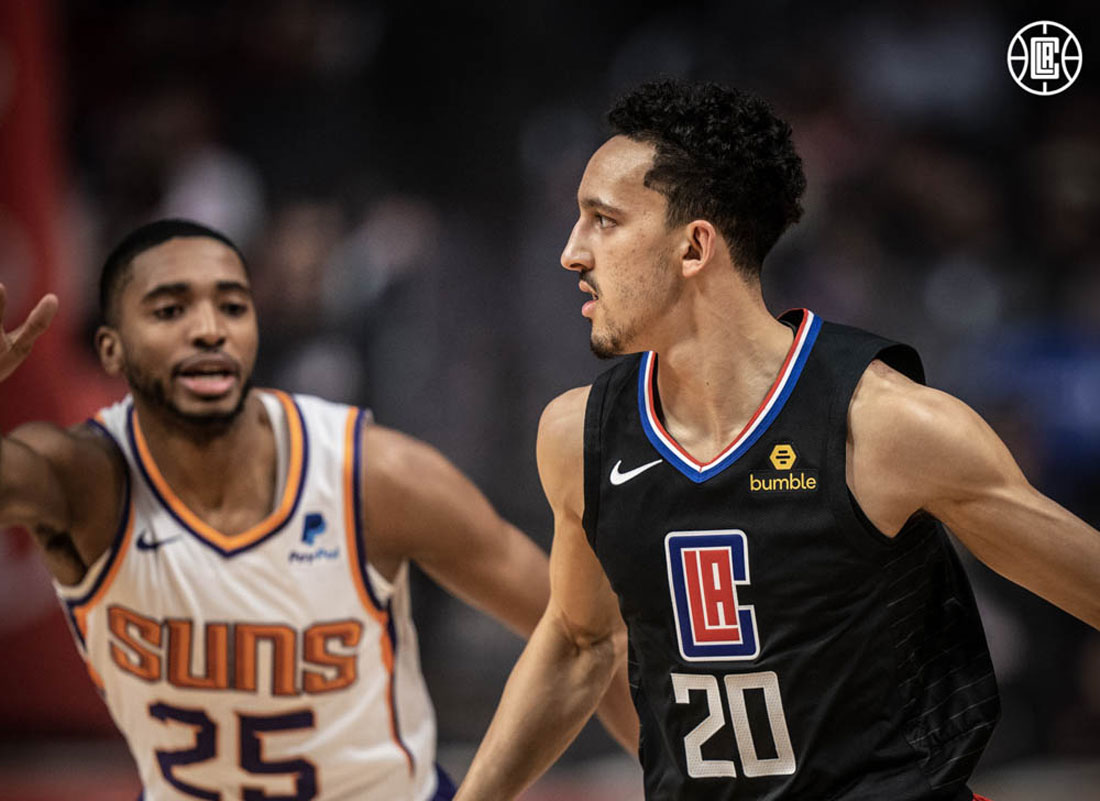By Neel Madhavan
Medill Reports
Prior to the start of the season, most preseason predictions had the Los Angeles Clippers in the bottom-half of the NBA, outside the playoff picture.
Now at the All-Star break with 23 games left in the season, the Clippers are sitting in the eighth and final playoff spot in the Western Conference, with a one-game lead on the Sacramento Kings and just one game behind the Utah Jazz and San Antonio Spurs in the sixth and seventh spots, respectively.
Head coach Doc Rivers and the Clippers’ offensive system have a lot to do with that.
In Feb. 13’s 27-point win over the Phoenix Suns, the Clippers scored 134 points, about 20 points higher than their season scoring average.
[youtube https://www.youtube.com/watch?v=8fO6eHnAqCM&w=560&h=315]
Scoring outputs like that have become a regular occurrence for the Clippers. Interestingly, the Clippers are just one of two teams in the top-15 in scoring in the NBA without an All-Star on its roster.
“Basically, what they run, like what most teams run now, is – you can call it motion or you can call it spread,” said BBALLBREAKDOWN’s Nick Hauselman. “It’s also called pistol offense or 21 offense. What [Rivers] is doing is a lot of hand-offs, so a lot of passing on the perimeter with four guys on the perimeter spread wide. It’s basically the Warriors’ system, and everybody does it, and everyone makes their own minor tweaks to what their system is.
“It’s not that complicated, but it certainly provides a lot of space for them to operate.”
The Clippers dealt away leading scorer Tobias Harris and other key pieces like Avery Bradley and Boban Marjanovic before the trade deadline on Feb. 7 in order to continue to collect assets and cap space for the chance to build a contender during the summer.
“Tobias Harris, arguably, is an All-Star this year the way he was playing,” Hauselman said. “Also, one could argue that Danilo Gallinari was as good or better than Tobias Harris this year. You have two forwards that can shoot, they can handle the ball, they can do a lot of things. So, you have a team that’s very hard to guard because you have a textbook small-ball team. They can spread the floor, they can move the ball and they can shoot it.”
In return for Harris, Bradley and Marjanovic, the Clippers received Landry Shamet, Ivica Zubac, Garrett Temple and JaMychal Green.
Until they get up to speed, Rivers is taking the time to slowly ease his new players into the offense and into the team’s nightly gameplan.
“We still don’t have a lot in,” Rivers said after the win against the Suns. “But, what we have in, they’re starting to run and starting to execute, and that was good to see.”
While the Clippers didn’t necessarily find a like-for-like replacement for Harris’ unique skillset, Hauselman said he expects Gallinari’s usage rate and numbers to increase over the Clippers’ final 23 games of the season.
Shamet also expects to figure heavily into the Clippers’ new offensive formula. The rookie guard acquired from Philadelphia is averaging 13.3 points per game in his first three outings with the Clippers.
“I feel like I fit quite well with the guys we have, with the whole plan moving forward,” Shamet said after the win against the Suns. “We’re a young group looking to grow. With my game I feel like I can bring shooting and stretch the floor for the rest of our options offensively and make it easier.
“Doc makes it easy to come in and get acclimated, he empowers you to shoot the ball and play free. He doesn’t want you playing tight, so he just encourages guys to go and play the game. I’ve come in and have been trying to learn all the new terminology and nuances of the system here, trying to pick my spots, find my open looks and make the most of it.”

